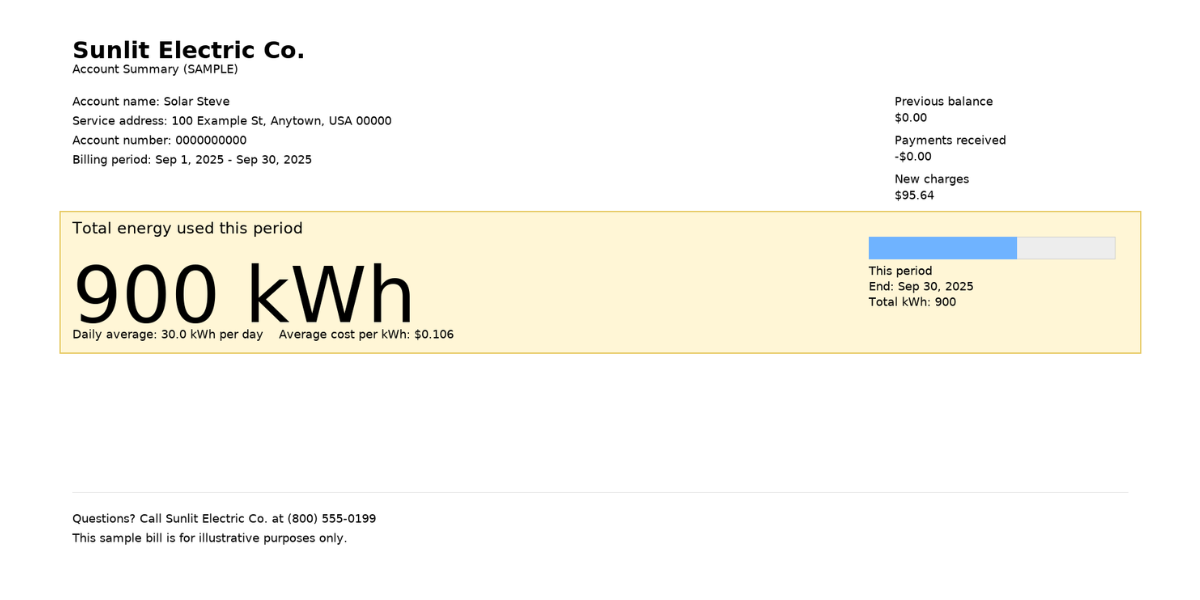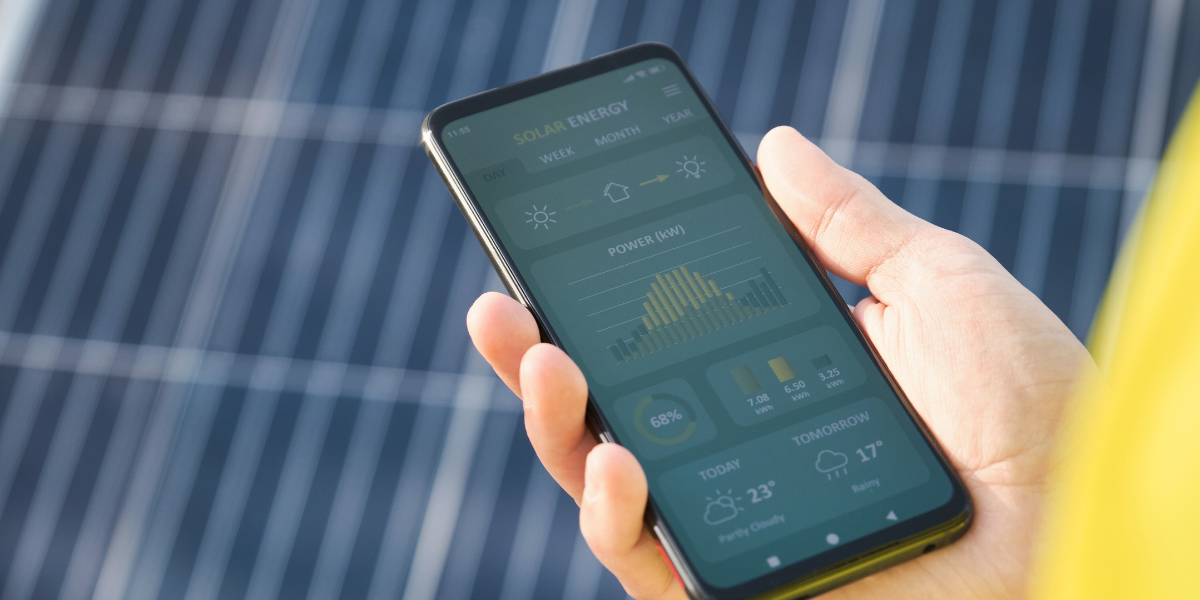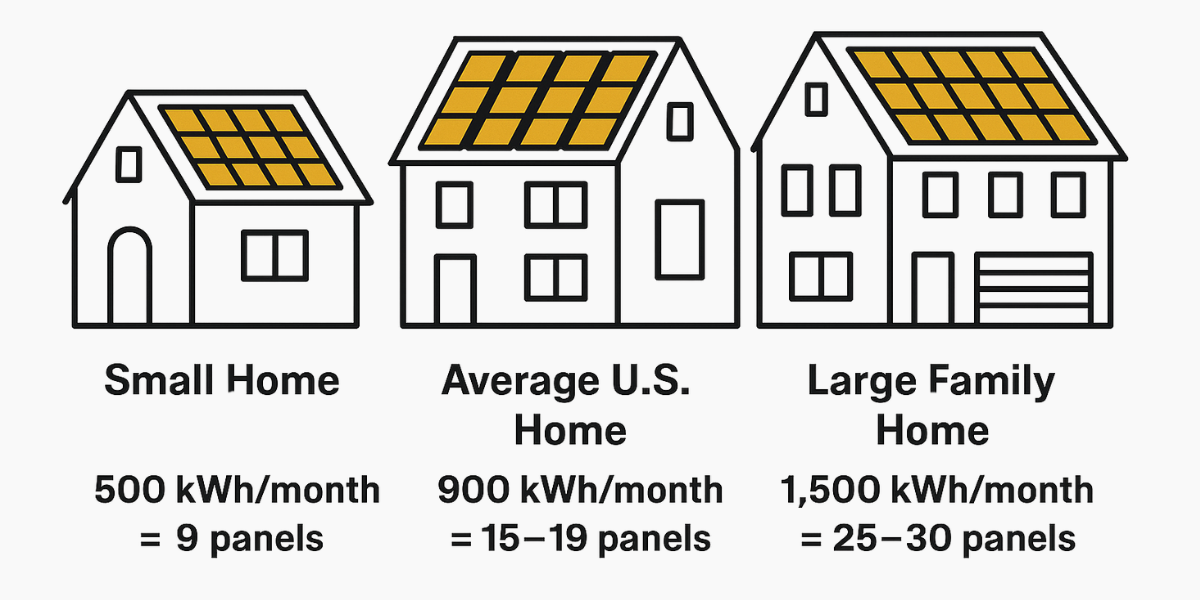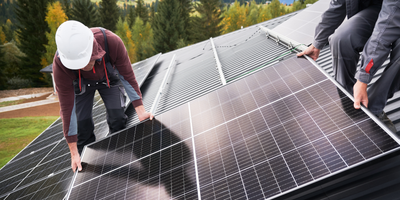How Many Solar Panels Do You Really Need?
Posted by Signature Solar on 9th Oct 2025
When people start researching solar, one of the first questions they ask is: “How many panels will it take to power my home?” The answer isn’t one-size-fits-all. It depends on your energy use, the type of panels you choose, where you live, and what your goals are for going solar.
Let’s walk through how to calculate it step by step, with examples you can follow using your own electric bill.
Step 1: Find Your Energy Use
Your electric bill is the best place to start. Look for monthly usage in kilowatt-hours (kWh). That number tells you how much energy your home consumed during the billing cycle.
- Example: If your bill shows 900 kWh per month, your average daily use is:
- 900 kWh ÷ 30 days = 30 kWh per day
Tip: If your bill shows seasonal swings (higher in summer or winter), look at your annual usage total and divide by 12 to get a more accurate monthly average.

Step 2: Understand How Much a Panel Produces
Most residential solar panels today are rated between 350 and 450 watts. The wattage tells part of the story, but the real measure is how much electricity the panel will produce in your location.
This depends on peak sun hours (the amount of strong sunlight hitting your panels per day).
- In a sunny state like Texas or Arizona, you might get 5–6 peak sun hours daily.
- In a northern state like New York or Michigan, it may be closer to 3–4 hours daily.
Example with a 400W panel in 5 peak sun hours:
400W × 5 hours = 2,000 watt-hours = 2 kWh per day
Step 3: Do the Math
Now that you know your daily energy use and how much a single panel can produce, it is time to put the numbers together.
Example:
- Daily household usage: 30 kWh per day
- Output of one 400W panel in 5 sun hours: 2 kWh per day
Calculation:
30 kWh ÷ 2 kWh per panel = 15 panels
That means you would need about 15 solar panels to cover a 900 kWh monthly bill in a sunny area with 5 peak sun hours per day.
If you live in an area with fewer sun hours, for example 4 instead of 5, the same household would need closer to 19 panels to cover the same usage.

Step 4: Adjust for Your Goals
Not everyone wants the same level of solar coverage. Once you know how many panels it would take to cover 100% of your usage, you can scale the system up or down depending on your priorities:
- Partial coverage (50–75%)
Cuts your bills without needing as many panels. Good option if you have limited roof space or want to lower upfront costs. - 100% offset
Most common goal. Your panels generate about as much energy as you use in a year, so utility bills are nearly eliminated (aside from small fees). - Oversized system
Some people install extra capacity to plan for the future, like charging an EV, adding a hot tub, or accounting for panel degradation over time.

Step 5: Factor in Roof Space & Panel Efficiency
Roof size and orientation
A small or shaded roof may limit how many panels can be installed. South-facing roofs capture the most sunlight, while east- and west-facing roofs can still perform well with some adjustments to system size.
Panel efficiency and wattage
The type of panel you choose also plays a role. Higher-efficiency panels produce more power in the same amount of space, which is especially helpful if your roof area is limited. Wattage tells you how much electricity a single panel can generate. For example, a system built with 450W panels will need fewer panels than one using 350W panels to reach the same overall output.
Practical takeaway
If you have plenty of roof space, standard panels are often the most cost-effective choice. If space is limited or you want to maximize production, higher-efficiency or higher-wattage panels can help you get the most energy out of a smaller area.
Real-Life Examples
These examples show how monthly electricity use translates into the number of panels needed. The numbers assume modern residential panels around 400W each, with average system efficiency.
- Small home
Uses about 500 kWh per month in a sunny location like Texas. This would require around 9 panels to cover the usage. - Average U.S. home
Uses about 900 kWh per month in typical sunlight conditions. This would require roughly 15 to 19 panels, depending on the exact wattage of the panels and local sunlight. - Large family home
Uses about 1,500 kWh per month in average sunlight conditions. This would require about 25 to 30 panels to cover the demand.

Extra Things That Change the Numbers
- Climate and weather: Cloudy days don’t stop panels, but they reduce output. Annual averages matter more than single days.
- Energy efficiency upgrades: If you switch to LED lighting or upgrade to a more efficient HVAC system, your usage may drop, meaning fewer panels are needed.
- Battery storage: Adding batteries doesn’t change how many panels you need, but it changes how you use that solar power (storing excess for nighttime or outages).
The Bottom Line
Online calculators can give you a quick estimate, but every home is unique. Our sales team can help you review your energy use, model realistic production for your location, and factor in future energy needs to design a system that actually meets your goals.
Have questions? Call our USA-based solar experts at 903-441-2090. Our sales team can guide you through your options, or you can reach out to our design team for a free custom design service.

